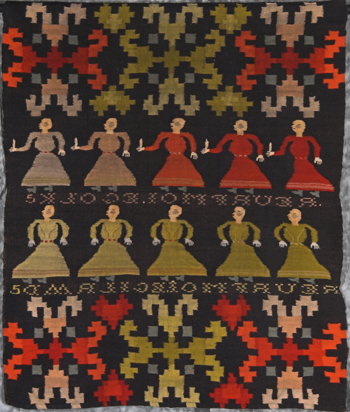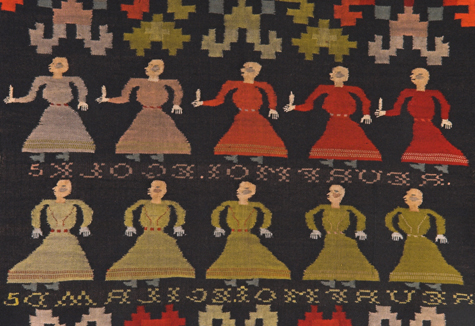
Wall Hanging – Scandinavian Weaving
While the name of the craftsperson is not known, the technique is used in all the Scandinavian countries. The text, in Danish, reads 5 KLOGE JOMFRUER / 5 DAARLIGE JOMFRUER, or in English 5 Wise Virgins / 5 Bad Virgins. When the front of the wall hanging is showing, the letters appear in the right order from left to right, but reversed. This is because, tapestries are woven with the back side facing the weaver, and the maker forgot to weave the letters in reverse.
Details



